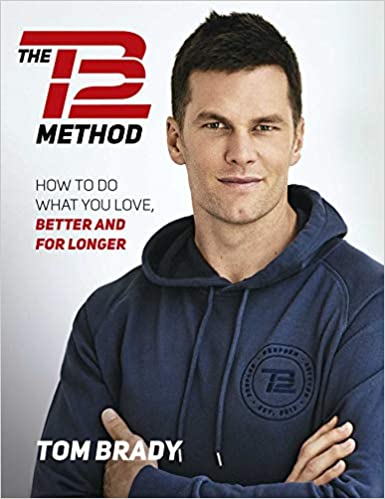Tom Brady was never supposed to be a star. In high school, he was the third-string quarterback of a losing freshman team. At the University of Michigan, he was sidelined as the seventh-string quarterback. And he was a sixth-round pick, overlooked in the NFL draft. Seven Super Bowl rings later and shattering records, he proved everyone wrong who had discounted him.
But Brady isn’t an anomaly. There is always a diamond in the rough, a job candidate or employee who may not look, at first glance, to be exceptional but whose talent and determination just need the chance to prove themselves. And once the diamond is unearthed, everyone gets to see the shining star. Lisa Niesen, head of talent management with SHL, told me by email that employees are so much more than what’s on paper. “A person is not their resume, and there isn’t one perfect way to evaluate a candidate or employee’s potential,” Niesen says. “Understanding a person’s life and backstory can inform how hard they have had to work to get as far as they have. It can also suggest how, with the right environment and support, they may likely perform in a particular role. However, combining that insight with objective data and metrics is key to evaluating someone’s true potential and likelihood of outperforming expectations, much like NFL quarterback Tom Brady. This will create the best chance of finding your company’s ‘G.O.A.T.’ employee.”

How To Identify Your Company’s G.O.A.T Employee
Now that remote and hybrid work have become the norm, it can be difficult to uncover an employees’ potential when they are far away, and managers can’t easily keep an eye on everything that’s going on. Plus, the quiet culture trend further adds to the difficulty of identifying Super Bowl talent in the workplace. Here are six strategies to unearth and draft your very own Tom Brady, who could be indiscernible right under your nose.
- Avoid creating a “quiet culture.” Recent practices of “quiet firing” and “quiet hiring” can create environments of fear and job insecurity that eclipse a company’s ability to identify Super Bowl talent. It creates productivity paranoia and mistrust, causing workers to hide out instead of stand out. The same goes for employees or job candidates who want to be seen and rewarded for their efforts. If you have Tom Brady potential, being a “quiet quitter” makes you invisible, likely to be overlooked by management. Studies show when employees—especially those working remotely—make the effort to get noticed and go the extra mile, the majority of managers notice, respect the extra effort, and stand-outs get rewarded. If you want to be seen and heard, find the spotlight that matches your personal set of skills and advances your career.
- Encourage a culture of openness. Data from Deloitte show that trusted companies outperform their peers by up to 400%, directly correlating with the bottom line. A culture of openness develops trust and transparency, encouraging employee feedback, which in turn, enables employers to uncover potential that otherwise could be hiding behind the proverbial potted plant. Openness and transparency provide psychological safety for employees to speak up and stand out. Although it takes extra time and effort to promote visibility, the payoff is worth the effort.
- Develop a visibility strategy. A visibility strategy enables leaders to identify, recognize and reward employees for outstanding work. A list of criteria guides visibility, helping leaders identify the prospects who go the extra mile beyond their job description. It helps pinpoint workers with a combination of hard skills, plus the the five pivotal soft skills necessary for success in today’s global market. Lending a helping hand to ease a snowed-under coworker or staying on top of projects to keep them moving are examples of the soft and hard skill combination. When employers recognize life events and work milestones, employees feel appreciated and loyalty to the company.
- Connect with employees. Employee invisibility spikes in the absence of consistent leader contact and communication. To identify your Tom Brady talent, it’s essential to find ways to strengthen employee connections so you can get to know them as a human beings, their lives and their backstory, as Niesen suggests. To foster your discovery, you need workers with a satisfying connection with—versus an isolation from—company leaders and colleagues. That entails checking in with employees on a regular basis to keep them in the loop, let them know they belong and are valued to keep them connected to the company. Making extra efforts to express gratitude and recognize and reward those who offer new ideas or volunteer their time is crucial. Leaders who prioritize connections with employees are 2.3 times more likely to have engaged workers, 5.4 times more likely to be agile and 3.2 times more likely to have satisfied customers. Everybody wins when leaders celebrate important moments with staff and create togetherness, if for no other reason than to connect employees to one another and to the company as a whole.
- Practice empathic leadership. A Catalyst study found that employees with empathetic leaders are more likely to have Tom Brady-ish traits: innovative, engaged, less likely to leave a position, inclusive and balanced. Quarterback Brady is also know for his acts of kindness. Kind leaders have kinder employees and attract kinder applicants; kindness boosts productivity and engagement; and employees on the receiving end of kind deeds are more likely to put in more discretionary effort, welcome new employees and fill in for coworkers, which allows them to stand out and be seen by their employers.
- Inspire courage instead of fear. Obsolete companies have a rigid corporate scaffolding that stifles innovation, instills fear, limits worker potential and hurts the company’s bottom line. If you’re looking for your next Tom Brady, let employees know they will be rewarded for taking professional risks and breaking old molds—like Brady has done. Embolden employees to ask what edge they can go to in their careers to create a more innovative and productive workplace. Ask them to consider what bridge they can jump off to sprout their wings and build the company or to reach that limb to get to the fruit of the tree to boost their visibility along with the company’s profitability.
Step Up Your Game In Search Of Tom Brady
According to Gallup, companies fail to choose the candidate with the right talent for the job 82% of the time. “We’re in new times, which calls for new rules of engagement when attracting talent—especially when recruiters and employers are struggling to fill roles,” observes Workable’s content strategy manager, Keith MacKenzie. “The onus is now on employers to really step up their talent attraction game and loosen the requirements for a role. There’s a huge path to get there: find and hire those top prospects and develop them when they’re with you.”


